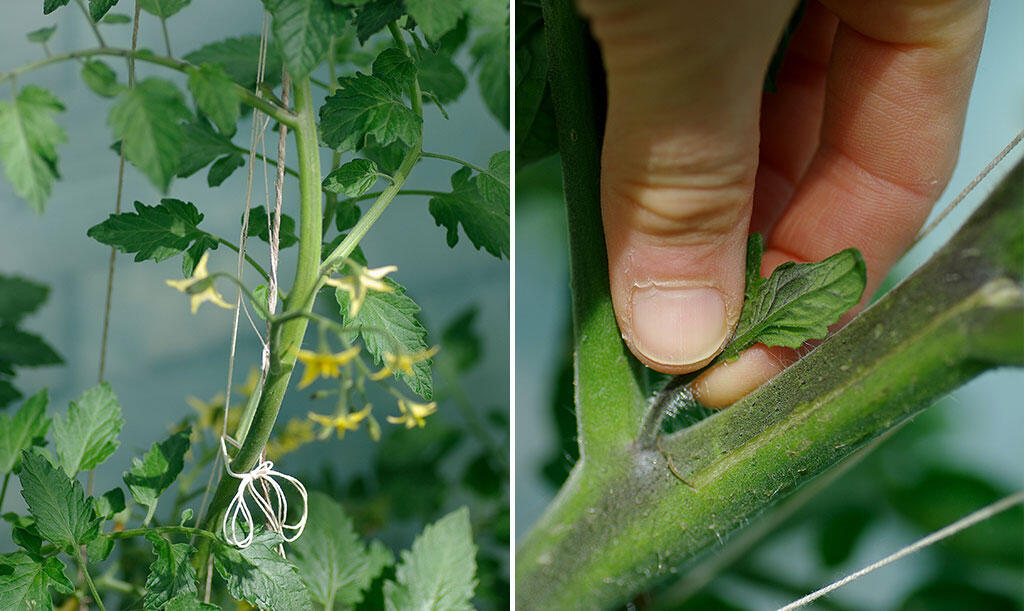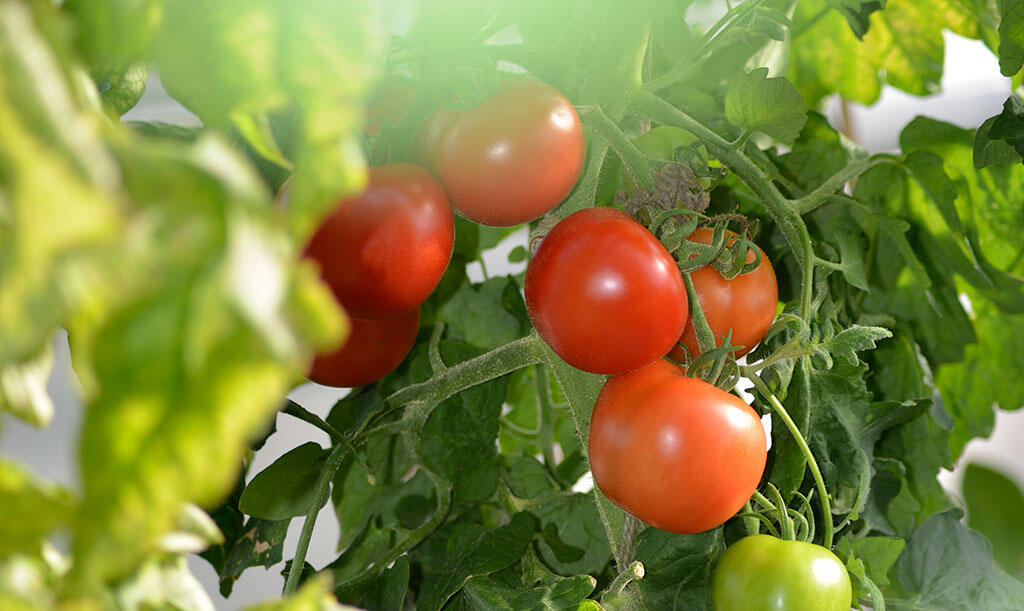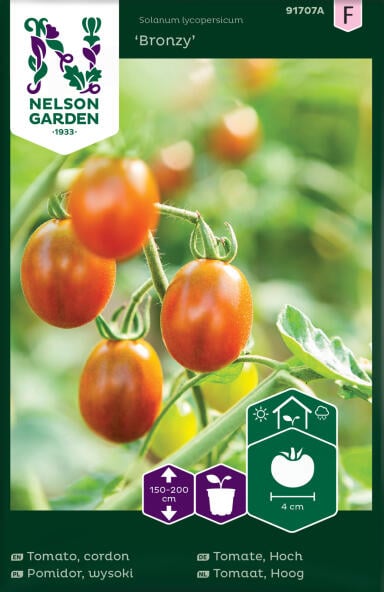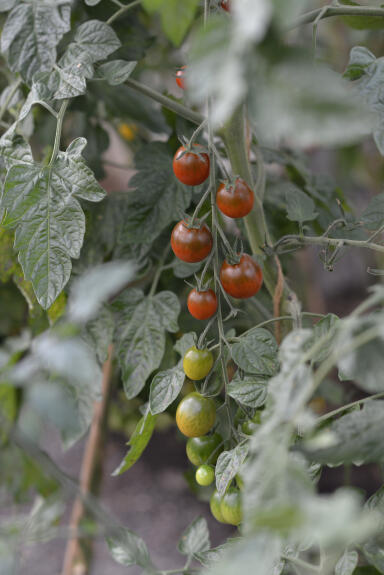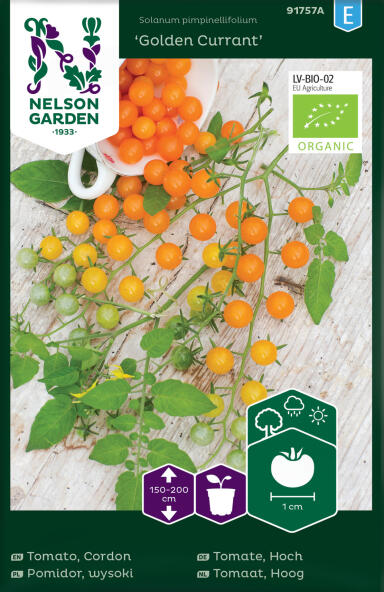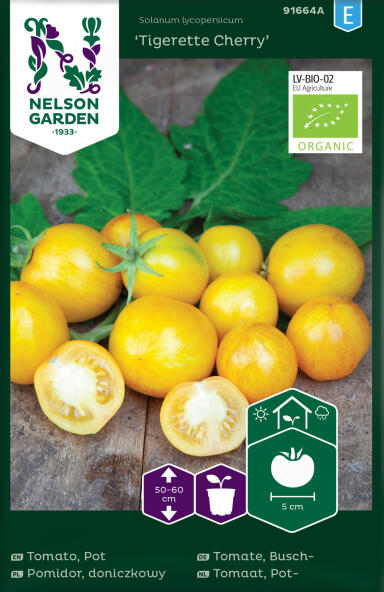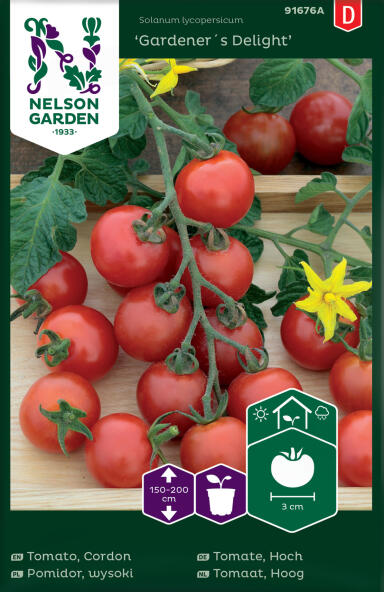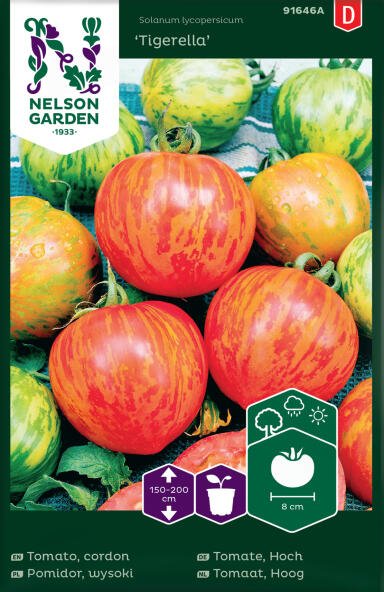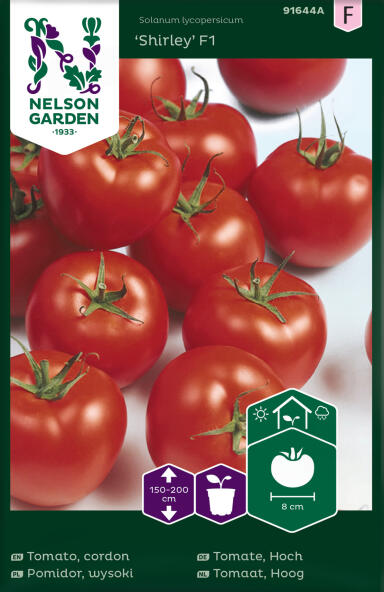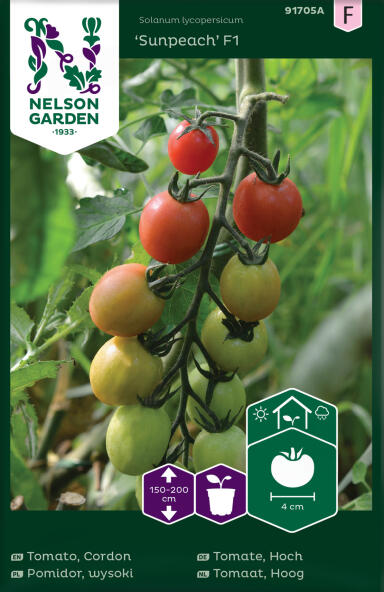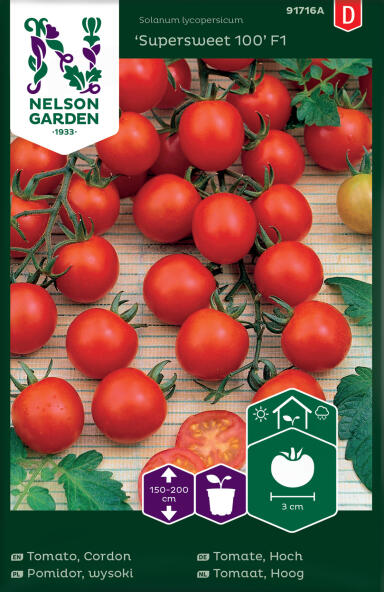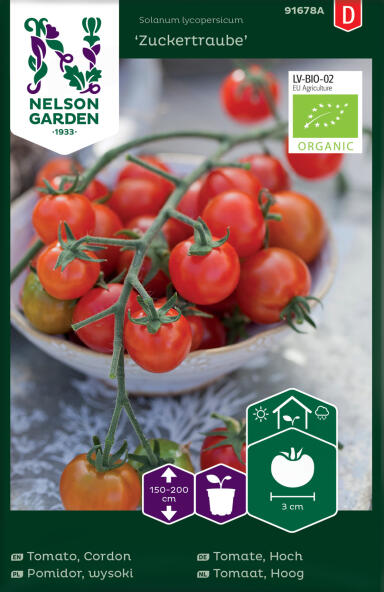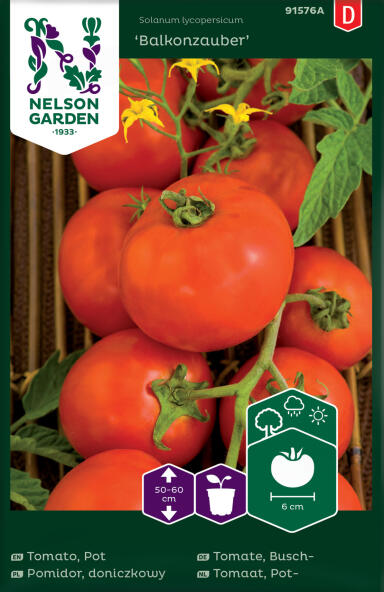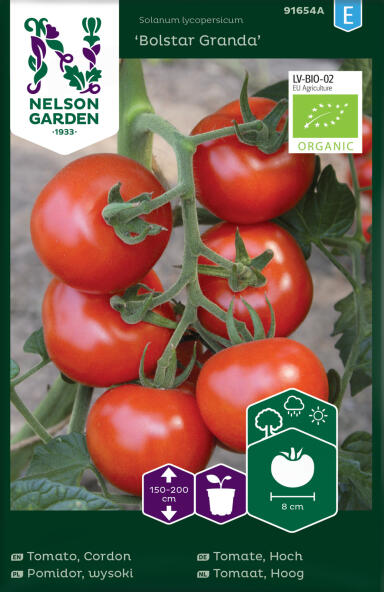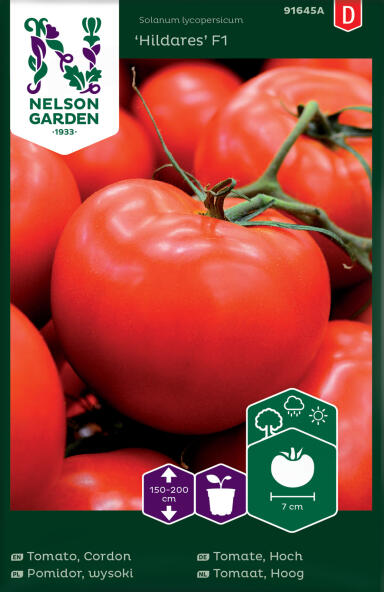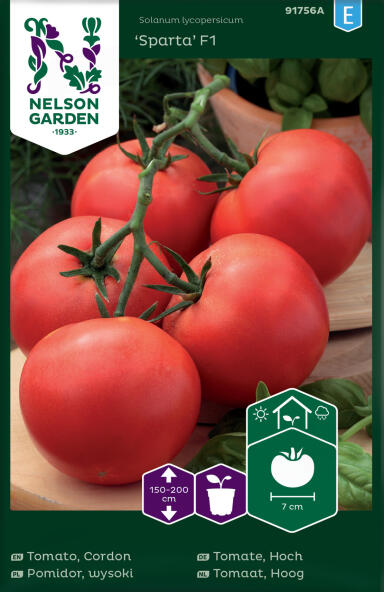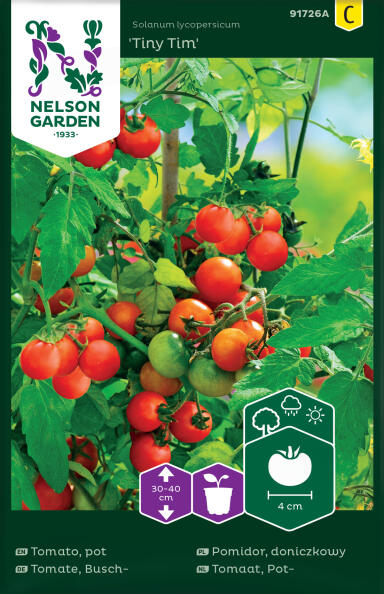Free returns
Quick delivery
Established 1933
Growing tomatoes
20 June 2022Growing tomatoes doesn’t have to be difficult or take up much space – and you don’t necessarily need to have a greenhouse or a garden. If you choose potted tomatoes, you can grow them by a window or on the balcony. In our tomato guide, we help you to grow tomatoes from seed to harvest.
Growing tomatoes from seed is something you can do wherever you live. You can grow tomatoes in pallet collars, on balconies, in greenhouses, or even indoors or hydroponically. Growing your own tomatoes and the feeling of getting to sink your teeth into the first sun-kissed tomato is unbeatable!
When should I sow tomato seeds?
You can start propagating tomato seeds from mid-February to April. For best results, sow your tomato seeds in a mini greenhouse. If you don’t have a mini greenhouse, you can sow the seeds in small pots and cover them with plastic film that you poke a few holes in.
What should I do?
1. Fill your container with seed compost, water the compost to make it moist and place the seeds on the surface. Cover the seeds with a thin layer of seed compost or Vermiculite. Water a little more.
2. Keep your seedlings warm – preferably 20 degrees or more – and moist. Tomatoes grow poorly in low temperatures, so if you have a cold indoor temperature, a heat pad might be a good idea. Do you have underfloor heating? Put your seedlings on the floor.
3. When the plants emerge, it is a good idea to lower the temperature a couple of degrees. It is also important that the plants get plenty of light. Place the tomato plants near a window, preferably facing south, if you don’t have extra grow lights. Continue to keep the seeds moist by watering occasionally.
If there are a lot of leaves, you may need to remove some to give the tomatoes the chance to ripen. Photo: Anna Lindeqvist
When should I repot my tomato plants?
Allow each tomato plant to grow in the mini greenhouse until you see a second leaf pair (true leaves) start to emerge above the cotyledon. Now is the time to transplant (repot) the tomatoes in a pot filled with more nutritious potting soil.
Carefully remove the tomato plant with its roots and place it in a larger pot with soil. Ideally, put the tomato plant deep into the soil in the new pot so that almost only the leaves of the plant are sticking up above the soil. The tomato plant forms roots along the stem so this will help it develop better.
Keep the soil moist and add liquid food to the new pot after a few weeks. Continue to fertilise regularly. Transplant the plant again when it is bigger and fill the pot with soil up to the lowest leaf pair.
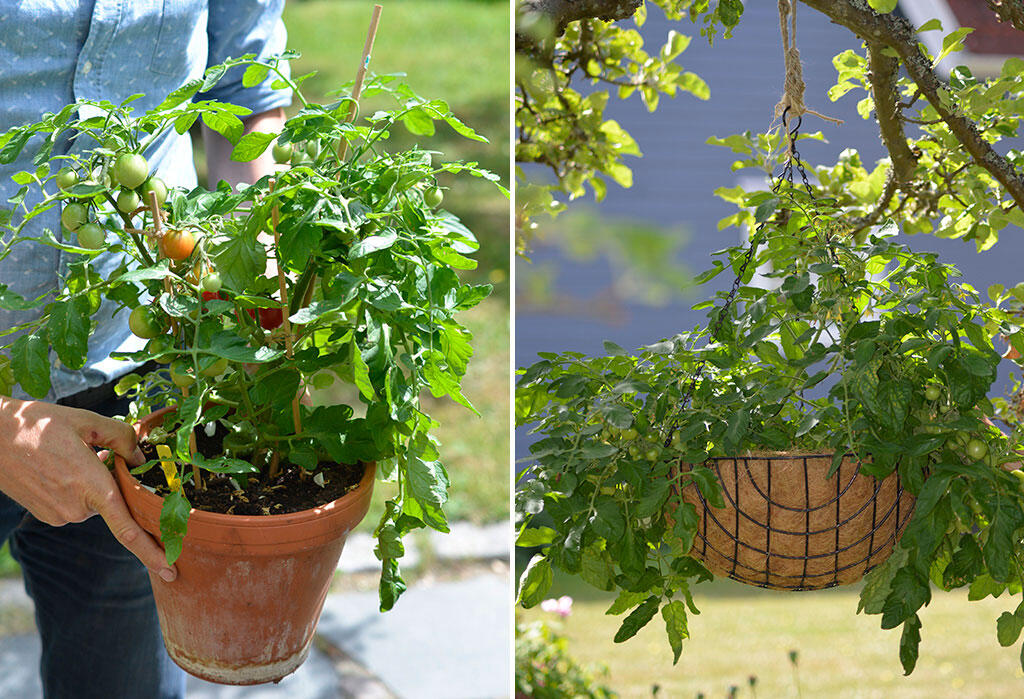
Tomatoes can be grown in pots or hanging baskets if you choose a low-growing variety. Photo: Markus Danielsson
When can I plant my tomatoes outside?
When the overnight temperature stays around 8 degrees or higher, you can put your tomatoes in a greenhouse or in a sheltered, sunny spot by the wall of your house. Get your tomato plants used to life outdoors by leaving them out for just a few hours at a time for two to four days. Avoid exposing them to strong sunlight for the first few days. If your tomato plants are to be grown in pots, each plant will soon need a larger pot. Smaller bush or potted tomatoes need pots of about 5–10 litres, while taller tomato varieties need at least 20 litres of soil. Put just one tomato plant in each pot.
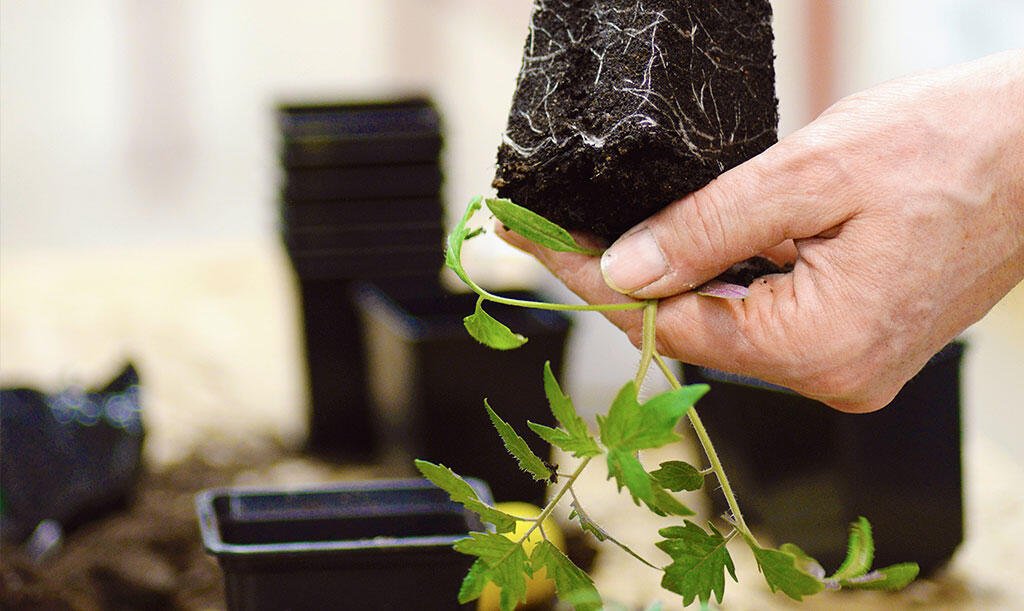
Try to transplant the tomatoes in stages. Allow the root system to fill the pot before transplanting to a larger pot. Photo: Lovisa Back
Which variety should I choose?
There are lots of different tomato varieties to choose from. There are tall-growing and low-growing varieties. There are cherry tomatoes, plum tomatoes, vine tomatoes and beef tomatoes. There are yellow, green and classic red tomatoes. There is so much to choose from!
Whether you choose a low-growing bush tomato or a tall variety that needs support, you’ll find the fruits vary widely. Some have thin skins and are well-suited to being eaten straight from the plant. Others have thicker skins that make them more durable and can therefore be stored a little longer.
Bush tomatoes usually ripen faster than tall varieties, so go for one of those if you’re impatient. You can also grow several tomato varieties with different development times to ensure a long tomato season. All tomatoes like heat and should be grown in sheltered locations, but some varieties do well outside. Other tomato varieties thrive best in a greenhouse or similarly warm climate. Check to see if there is a greenhouse symbol on the seed packet.
So, start by deciding how much space your tomato crop will have and choose your variety accordingly. Once you know which variety you have room for, you can then make your choice based on characteristics such as taste, texture and durability.
Tips! Are your tomatoes tall-growing? Make sure you have proper support in place from the start.
To pinch back or not to pinch back tomato plants?
To get as many tomatoes as possible on each tomato plant during the short growing season, it is important to give the plant the best conditions. One way to do this is by pinching back the tomato plant. This means that you remove the suckers that grow at 45 degree angles between the stem and the leaf branch. This gives the tomato plant more energy to develop the tomatoes, rather than spending it on developing more branches and leaves.
Not all tomato plants should be pinched-back – only the tall-growing varieties. These also need to be supported. Bush tomatoes, dwarf tomatoes and vine tomatoes usually don’t need pinching back because the side suckers will also have time to develop fruit.
The seed packet will tell you if your variety needs pinching back.
When should I start feeding tomato plants?
When you repot a tomato plant, the new compost is full of nutrients. If you’re using soil from your own garden, you’ve probably added nutrient-rich compost that tomatoes will happily take up. After two to three weeks, it’s time to add more food. It is best to feed little and often, at least once a week, depending on the type of plant food you choose to use.
Most plants can cope with similar amounts of food – the plants themselves control how much of each substance they take up. Nutrient requirements differ depending on the stage of growth of the tomato. When it’s time for fruiting, the plant needs a little less nitrogen (for leaf growth) and a little more phosphorus and potassium (for fruiting). To make it easy for you, there are special plant foods for tomatoes.
As tomatoes grow quickly and need nutrients to grow and produce fruit, you need to make sure they are fed until the end of the summer. If you don’t give them any extra nutrients at all, your tomato plants will survive, but they are unlikely to produce a big harvest.
